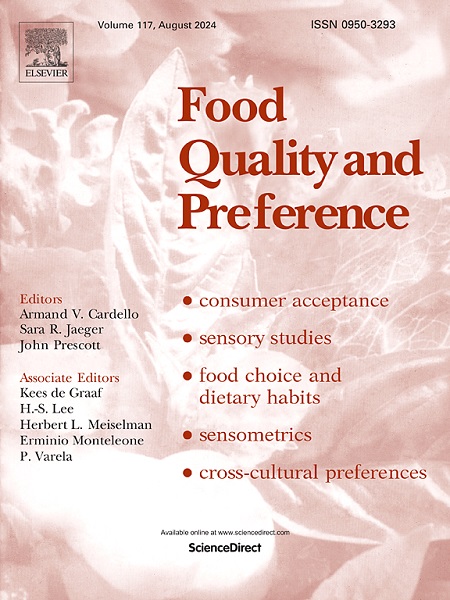Soft claims unwrapped: How they drive Preadolescents' food choices
IF 4.9
1区 农林科学
Q1 FOOD SCIENCE & TECHNOLOGY
引用次数: 0
Abstract
This study explores the impact of Soft Claims—indirect or vague packaging messages emphasizing a product's healthiness or benefits—on adolescent food choices, addressing a significant gap in consumer research. While prior studies have focused on adults, this research examines the influence of these claims on adolescents aged 12–15 using the Reactivity to Embedded Food Cues in Advertising Model (REFCAM). A within-subject experimental design exposed 565 participants to 60 stimuli across five food categories. Results reveal that Soft Claims significantly increase product selection regardless of healthiness, with no differences observed between emotional (e.g., “Discover the art of enjoyment”) and health-related claims (e.g., “Your most nutritious drink”). Contrary to expectations, gender and perceived income did not moderate these effects, and the presence of claims equally influenced the selection of healthier and unhealthier products. These findings extend the REFCAM model by highlighting the uniform effectiveness of Soft Claims across emotional and cognitive dimensions, suggesting that young consumers process these messages primarily at a surface level. The study underscores the potential risk of a “health halo” effect created by these claims, which could mislead adolescents into favoring less healthy options. This research provides theoretical insights into the mechanisms of advertising susceptibility among younger audiences and practical guidance for policymakers. Stricter regulations are needed to mitigate the influence of misleading marketing practices and promote healthier food choices, contributing to the fight against childhood obesity.
软声明揭示:它们如何驱动青春期前的食物选择
本研究探讨了软声明(强调产品健康或益处的间接或模糊包装信息)对青少年食品选择的影响,解决了消费者研究中的一个重大空白。虽然之前的研究主要集中在成年人身上,但本研究使用广告中嵌入食物线索的反应模型(REFCAM)来检验这些说法对12-15岁青少年的影响。在一项实验设计中,565名参与者接受了五种食物类别的60种刺激。结果显示,无论健康与否,软宣传都显著增加了产品的选择,在情感宣传(例如,“发现享受的艺术”)和健康宣传(例如,“你最有营养的饮料”)之间没有观察到差异。与预期相反,性别和感知收入并没有缓和这些影响,而且声称的存在同样影响了健康和不健康产品的选择。这些发现扩展了REFCAM模型,强调了软声明在情感和认知维度上的统一有效性,表明年轻消费者主要在表面层面处理这些信息。这项研究强调了这些说法造成的“健康光环”效应的潜在风险,这可能会误导青少年选择不太健康的选择。本研究为研究年轻受众的广告易感性机制提供了理论见解,并为政策制定者提供了实践指导。需要更严格的法规来减轻误导性营销做法的影响,促进更健康的食品选择,从而有助于防治儿童肥胖。
本文章由计算机程序翻译,如有差异,请以英文原文为准。
求助全文
约1分钟内获得全文
求助全文
来源期刊

Food Quality and Preference
工程技术-食品科技
CiteScore
10.40
自引率
15.10%
发文量
263
审稿时长
38 days
期刊介绍:
Food Quality and Preference is a journal devoted to sensory, consumer and behavioural research in food and non-food products. It publishes original research, critical reviews, and short communications in sensory and consumer science, and sensometrics. In addition, the journal publishes special invited issues on important timely topics and from relevant conferences. These are aimed at bridging the gap between research and application, bringing together authors and readers in consumer and market research, sensory science, sensometrics and sensory evaluation, nutrition and food choice, as well as food research, product development and sensory quality assurance. Submissions to Food Quality and Preference are limited to papers that include some form of human measurement; papers that are limited to physical/chemical measures or the routine application of sensory, consumer or econometric analysis will not be considered unless they specifically make a novel scientific contribution in line with the journal''s coverage as outlined below.
 求助内容:
求助内容: 应助结果提醒方式:
应助结果提醒方式:


